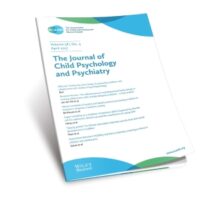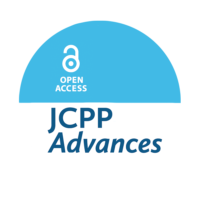Featured ACAMH Papers
-

Characteristics of complex posttraumatic stress disorder (PTSD) in young people with PTSD following multiple trauma exposure
Open Access paper from the JCPP – ‘The objective of the present study was to investigate how trauma characteristics, comorbid psychopathology and cognitive and social factors experienced by children and adolescents with a posttraumatic stress disorder (PTSD) diagnosis following exposure to multiple traumatic events differs between those who meet the criteria for CPTSD and those who do not.’ Katie Lofthouse et al.
Read more -

Cognitive bias modification of interpretations for anxiety and depression in children and adolescents: A meta-analysis
Open Access paper from JCPP Advances – ‘This meta-analysis aimed to establish the effects of CBM-I for children and adolescents on both anxiety and depression using psychometrically validated symptom measures, as well as state negative affect and negative and positive interpretation bias.’ Gemma Sicouri (pic) et al.
Read more -

Adolescent psychotic experiences before and during the COVID-19 pandemic: a prospective cohort study
Paper from the JCPP – ‘The Tokyo Teen Cohort (TTC) is a prospective cohort study of adolescents in the general population of the Tokyo metropolitan area, followed from age 10 to 16 years. We used multi-level linear regression models to test the associations between the phase of the COVID-19 pandemic and self-reported PEs.’ Jordan DeVylder et al.
Read more -

Antipsychotic prescribing patterns in children and adolescents attending Australian general practice in 2011 and 2017
Open Access paper from JCPP Advances – ‘We aimed to examine patterns of paediatric antipsychotic prescribing in Australian primary care services in 2011 and 2017, including diagnoses, sociodemographic characteristics, off-label prescribing, and psychotropic co-prescribing.’ Julie Klau (pic) et al.
Read more -

Longitudinal association of conduct and emotional problems with school exclusion and truancy: A fixed effect analysis of the UK Millennium Cohort Study
Open Access paper from the CAMH journal – ‘This study examines school exclusion and truancy in relation to both conduct and emotional problems and considers these problems both as predictors and as outcomes of school exclusion and truancy.’ Aase Villadsen (pic) et al.
Read more -

Are some children genetically predisposed to poor sleep? A polygenic risk study in the general population
Open Access paper from the JCPP – ‘Children who are genetically predisposed to insomnia have more insomnia-like sleep problems, whereas those who are genetically predisposed to longer sleep have longer sleep duration, but are also more awake during the night in adolescence.’ Desana Kocevska (pic) et al.
Read more -

Identifying characteristics of adolescents with persistent loneliness during COVID-19: A multi-country eight-wave longitudinal study
Open Access paper from JCPP Advances – ‘Using the widespread social restrictions associated with the COVID-19 pandemic, which precipitated loneliness in many, we aimed to examine adolescents’ loneliness profiles across time and the demographic predictors (age, sex, and country) of more severe trajectories.’ Laura Riddleston (pic) et al.
Read more -

Social connectedness and adolescent suicide risk
Open Access paper from the JCPP – ‘Despite evidence of the importance of interpersonal connectedness to our understanding of suicide risk, relatively little research has examined the protective and buffering effects of connectedness among adolescents.’ Alejandra Arango (pic) et al.
Read more -

A systematic review of the association between parent-child communication and adolescent mental health
Open Access paper from JCPP Advances – ‘This systematic review addresses how adolescent-rated parent-child communication (PCC) quality is related to adolescent mental health.’ Holger Zapf et al.
Read more -

Are restricted and repetitive behaviours in two- and six-year-olds associated with emotional and behavioural difficulties?
Open Access paper from JCPP Advances – ‘This study aimed to characterize the association of distinct RRB subtypes at two and six years of age, with internalising and externalising difficulties in a community sample of children.’ Sarah J. Carrington (pic) et al.
Read more